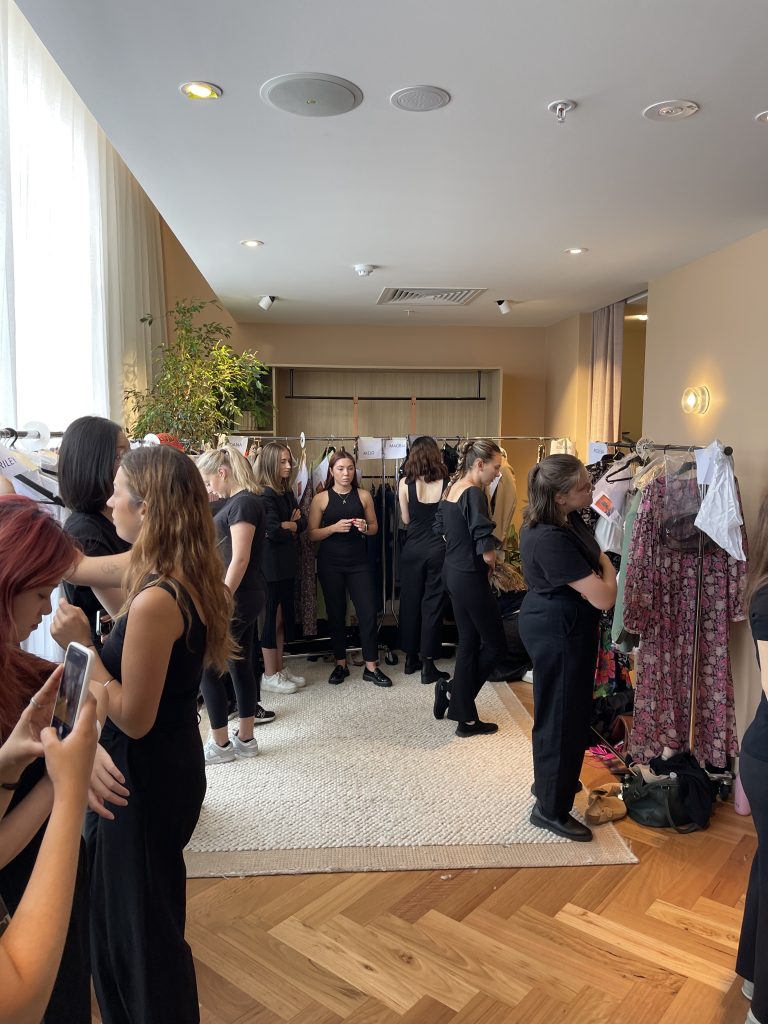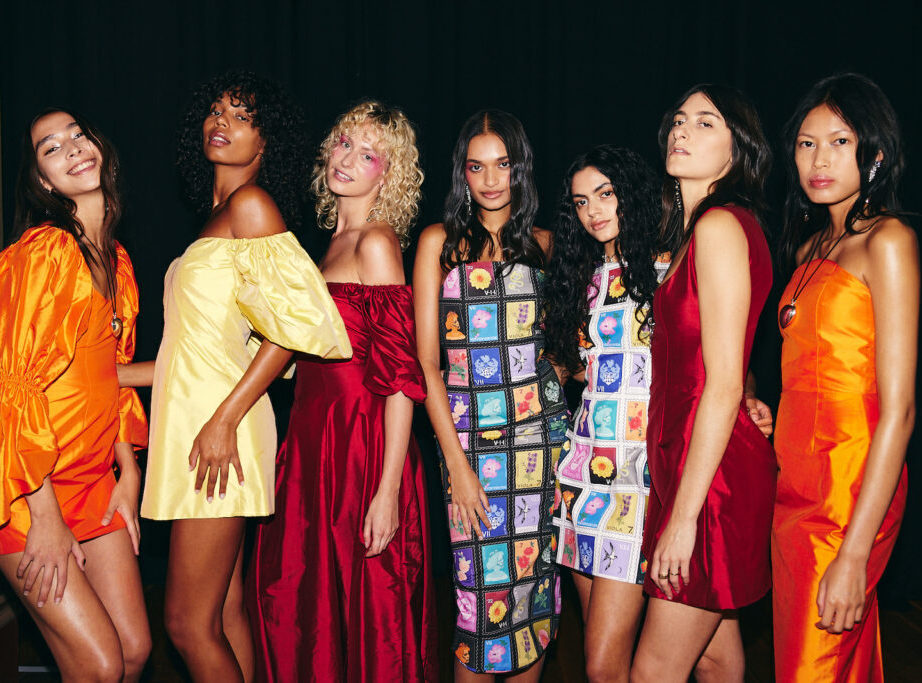In light of the recent Melbourne PayPal Fashion Festival, Instagram posts and Tik Toks are still being posted of the beautiful runways and street-style outfits worn to the shows. But what is it like to go backstage? When people think of fashion shows, they think of the portrayed version in movies and magazines. It’s glamorous, it’s exclusive and it’s beautiful. While those are all true in some respects, going backstage at the David Jones Pay Pal Fashion Festival sheds light on what really goes into planning an event of this calibre.

Runway shows are masters at disguising the long hours that go into their preparation, mostly because they are over in the blink of an eye. As a fashion student, model and avid participant in the industry, volunteering at David Jones’ show was a twofold decision. Firstly, I wanted to have a holistic view of the fashion industry as I have been a model for a few years but had never actually worked backstage on a runway. Second, networking is imperative in the fashion industry and where better to meet like-minded people than working with a powerhouse brand like David Jones. Whilst the end-product of the show is refined and dazzling, the months of preparation and inner workings are often overlooked for the beautiful clothing and people on the runway. I can’t speak on the overall event planning, but here is what happens backstage two days out from the show.
Volunteers arrived in the morning and were greeted by a security guard where bags were then checked. I later realised this was protocol due to the David Jones styling suit housing a mass of expensive clothing and accessories, where I have no doubt that previous years have seen some being tempted by the luxuries. After being escorted to the suit, we were greeted by the main styling team who were seemingly lively but tired from the previous days of many model fittings. This day was to consist of more model fittings and finalising the styling notes. This is done to allocate outfits and accessories to each model, as well as to play around with different styling options that the dressers on the day of the show will follow.
Volunteers were split into teams of three. The roles were dressing models, taking styling notes, and labelling clothing with the model’s information. Each team was then joined by a head stylist to approve each look, where they would then take a quick snapshot of the outfit and then call out a number that correlated with the next outfit. I highly recommend any Melbourne fashionistas who want to get into styling to participate in this show during next year’s fashion festival. After speaking to other volunteers, I found that the majority were RMIT students enrolled in design or merchandising, but there were also fashion students from other universities as well as people who have never studied fashion but wanted to dive headfirst into the industry.
As each model was coming in for their fitting, I was continually impressed by the diversity shown. From mature-age models to plus size, transgender and non-binary, David Jones’s booking of models didn’t lack. Each team worked with about six different models during the day, with fittings taking around an hour each. I can only imagine the months of work that went into curating each outfit for each model. Luckily, David Jones employed the expertise of stylist Stuart Walford, who worked tirelessly to ensure that models were sent down the runway looking their best in the AW23 collection. Also, luckily for us volunteers, most of the styling work was done. The fittings were just the final touches needed to secure each look for the show.
The next day, everyone met back again at David Jones, Bourke Street at 7:00am where rehearsals started at 8:00am. A very early start to a long but successful day. Volunteers were assigned one model upon their arrival, where they oversaw dressing and styling for the show. After the rehearsal, volunteers were hurrying around steaming their model’s outfits and helping with other random jobs that the head stylists were needing assistance with. Most models had three to four looks, with their last being styled as a wearable elegant evening look. The runway saw the likes of Dolce & Gabbana, Saba, Alexander McQueen, Bassike, Aje, Acler, Camilla & Mark and Hugo Boss and many more, all from the AW23 season at David Jones.
Overall, the show was a huge success, attracting many important names in the Australian fashion industry, and influencers, with images of the runway ending up in Vogue Australia. Although all volunteers were backstage for the whole show, the excitement and buzz from the crowd could be felt in the dressing rooms. Once the show finished, the models said their goodbyes and the volunteers started helping with the pack down. Even though it was a very long day, the adrenaline from the show pushed everyone through until the clothing, shoes and accessories were packed and ready for distribution back into the David Jones system.
There is something so satisfying about being part of an event like this with a tangible outcome and I think most people in fashion feel the same, which is why most try to get into the industry. If you study fashion, or even if you are studying something completely different but have an interest in the industry, I couldn’t recommend enough to get involved. Applications for the 2024 PayPal Melbourne Fashion Festival open next year in February with a multitude of shows that need dressers, front of house, assistant stylists and pack-down crew so you can experience it for yourself!
By Maya Madsen
Header Image via Bazaar Australia
Middle Image by Maya Madsen


